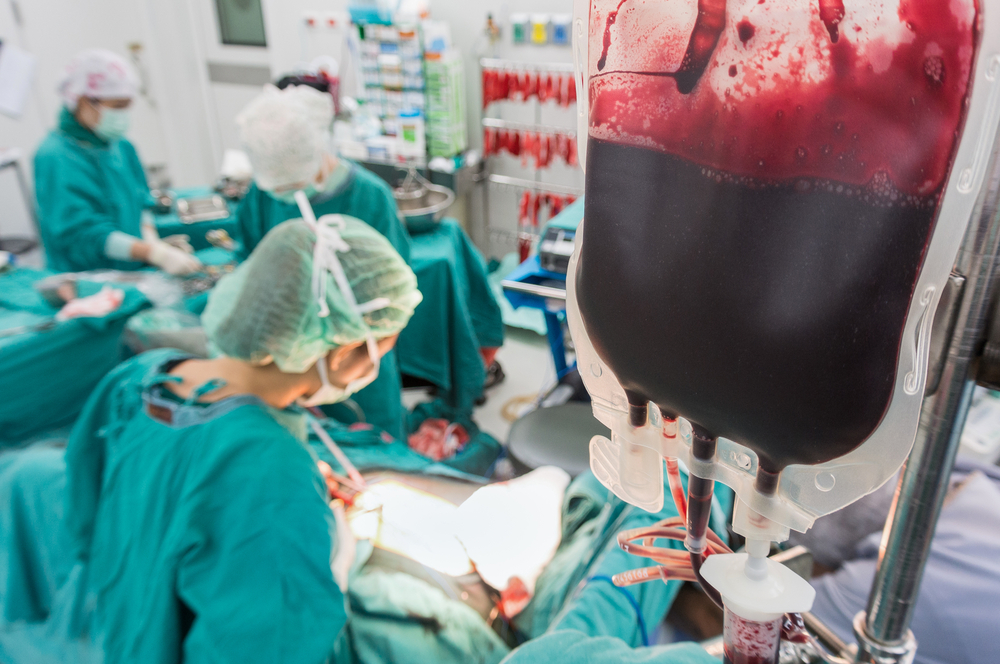
The study, “The Influence of Intraoperative Autotransfusion on Postoperative Hematocrit after Cardiac Surgery: A Cross-Sectional Study,” published in the December 2017 issue of The Journal of ExtraCorporeal Technology.
CLINICAL ISSUE
The salvage and re-infusion of blood lost during surgery—a practice known as “intraoperative autotransfusion” (IAT)—is widely acknowledged as beneficial to patients undergoing open-heart procedures who temporarily rely on a heart-lung machine (aka cardiopulmonary bypass pump) for circulatory support. The recovered blood first gets put through a washing process to reverse some of the changes that occur when it leaves the body.
IAT is often the centerpiece of an institution’s multidisciplinary surgical blood management program, since it typically returns the greatest volume of critical red blood cells to patients. It reduces the need for a transfusion using the blood of a compatible donor, which is riskier in terms of adverse reactions and the possibility of infection.
A research team with SpecialtyCare in Nashville, Tennessee, recently examined the impact of IAT on the red blood cell concentration (“hematocrit”) of 3,225 adult patients who had undergone cardiac surgery with cardiopulmonary bypass at 84 hospitals across the U.S.
STUDY DESIGN
Case records on patients operated on between February 2016 and January 2017 were drawn from the SpecialtyCare Operative Procedure Registry (SCOPE) for analysis. From an initial sample of 26,456 patients, the majority were excluded either because their record was missing data on variables of interest or during surgery they had a transfusion using the blood of another person.
Researchers divided patients into five groups based on milliliters of re-infused IAT volume per their body surface area in meters-squared (mL/m2 BSA): no volume returned (control group), less than 200, 200-275, 275-380, and greater than 380. Regression models then measured the effect on their hematocrit from bypass initiation to intensive care unit entry (“hematocrit drift”).
The study controlled for 17 known confounding variables, including gender and diabetes status as well as the influence of surgery occurring at the same hospital or with the same surgeon.
KEY FINDINGS
Female patients undergoing nonelective procedures and those with a history of diabetes were the least represented across IAT volume categories. Patients having a reoperation tended to fall in the higher volume groups.
Descriptive findings suggested operative time was a predictor of the IAT volume returned to patients. Median bypass time and cross-clamp time—the period when the heart is intentionally stopped and connected to the bypass pump, so the surgeon can safely operate—were longest in the largest volume group and shortest in the smallest volume group. The median volume of blood processed was also lowest in the control group and highest in the largest volume group.
Researchers also saw more positive hematocrit change with increasing IAT volume returned. The median hematocrit drift was greatest in the largest IAT volume returned group and smallest in the control group. The effect of IAT volume was found to be a .0045% increase in positive hematocrit drift per mL/m2 BSA returned to patients. For the median patient, that equated to a 3.6% elevation in their hematocrit.
Surprisingly, the 60-patient control group who had no IAT volume transfused also saw their hematocrit rise postoperatively by 2%.
EXISTING EVIDENCE
Published research consistently points to the equivalence, if not the superiority, of IAT relative to transfusions using donated product from a blood bank. Studies have also found that blood processed by an IAT device, when run through a heart-lung machine, lessens the body’s inflammatory response to bypass that can lower patients’ circulating blood volume and harm tissues and organs.
CLINICAL EXCELLENCE IN PRACTICE
The study created a hematocrit drift model that reliably predicts how much a patient’s hematocrit will rise without a transfusion as well as with increasing IAT volumes—up to 5% at volumes greater than 380 mL/m2 BSA. The referencing tool could help prevent transfusions among patients leaving surgery with their hematocrit level hovering a few percentage points below 24%, the threshold at which the procedure is generally considered unnecessary. Clinical teams managing patients in the immediate postoperative period can feel confident that patients’ red blood cell concentration will inevitably rise.
The measurable and predictable impact of IAT on hematocrit levels could prompt more surgeons to adopt the practice, which at some institutions could lower rates of transfusions using donor blood while lessening the negative effects of running blood through a heart-lung machine.
THE RESEARCH TEAM
The study team for this research consisted of Andrew J. Stasko, MBA, CCP; Alfred H. Stammers, MSA, CCP; Linda B. Mongero, CCP; Eric A. Tesdahl, PhD; and Samuel Weinstein, M.D. They are all members of the SpecialtyCare Medical Department established to maintain a quality-first focus on all clinical matters at the organization, and routinely publish in peer-reviewed journals.
LEARN MORE ABOUT AUTOTRANSFUSION



Comments are closed.